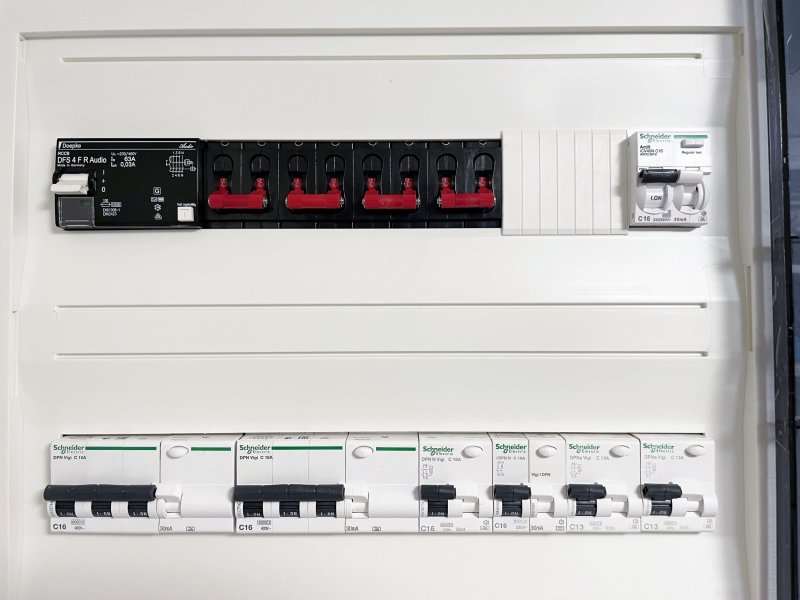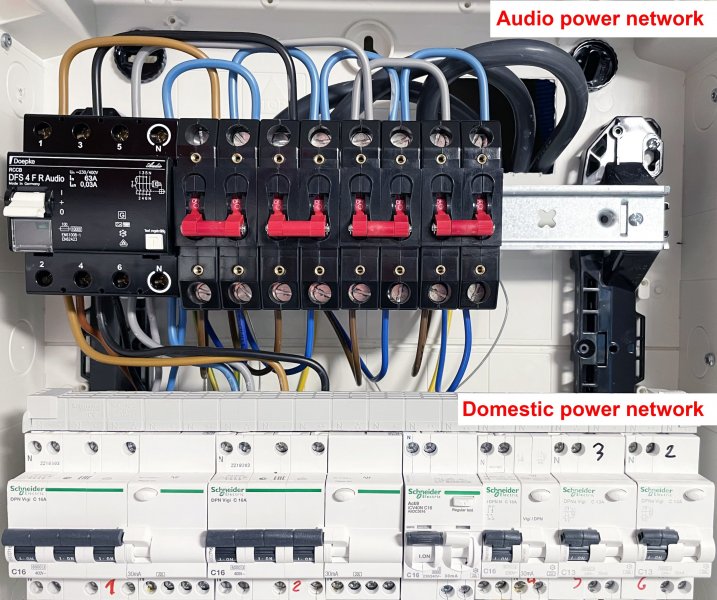In my own installation, which is according to UK code, the phase and neutral from my meter go directly to a sealed 100amp isolation switch before feeding into a Henley Block, where they are split to feed the household consumer unit and a dedicated hi-fi consumer unit. Being sealed, the isolation switch in the meter cabinet cannot be modified or bypassedIn the search for best possible 230Vac supply: After replacing RCCB and MCBs to audio grade have anyone looked at how much the main/isolation-switch degrades the quality?
The main household consumer unit has a main isolation switch, an RCCB differential switch and several MSBs . My hi-fi consumer unit on the other hand only has an RCCB and two contract breakers, as the RCCB also functions as an isolation switch.



